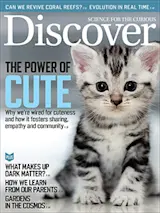On the northern slope of Hawaii’s Mauna Loa volcano, 8,000 feet above sea level, biology Ph.D. student Cyprien Verseux spent a year inside a simulated Mars habitat learning how to cultivate lettuce. Verseux was one of six ersatz astronauts participating in HI-SEAS IV, a 2015 University of Hawai‘i experiment. The group was part of a study on the psychological hardships of space exploration, examining team cohesion in extreme isolation.
Verseux’s agricultural project, an extension of his graduate research, was technically unrelated to the HI-SEAS mission. But it may prove no less crucial to interplanetary travel. If you want to support humans over the long term, it’s going to be very difficult and expensive to send into space all the food and oxygen people need, he explains. “The idea would be to produce what is needed on-site from what you find there.”
Verseux’s special lettuce may end up being just a ...















